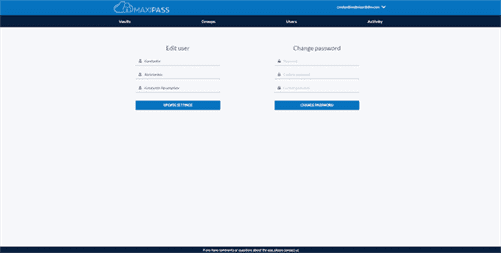Solution Architect What Does He Do? Complete Guide
In addition, you can channel all your energy into your business needs, and your vendor will take care of the recruitment process and will offer you the best specialists to choose from. It’s not really easy to find and hire a well-matching solution architect, as the market demand for accomplished specialists is enormous. If you want to hire an in-house member, the search process will take a while as you have limited access to professionals in your area. However, if you are open to new opportunities and can consider hiring a remote team member, you will increase your chances of hiring the right person. In many cases, the necessity to fit within the existing infrastructure is a crucial requirement that determines the choices and adds certain restrictions to a project. An architect is responsible for translating the vision for the project to the development team and plays a pivotal part throughout the entire systems development lifecycle.
A candidate with an MBA in information systems may also be a good fit for a role as a solutions architect. The solution architect role also requires being able to project into the future and consider upcoming uses. A solutions architect must view the long-term use of this product and implement scalability and adaptability into the solution for the future.
Defining and Communicating Architecture Vision
The average salary for a solutions architect is $119,000 per year, according to data from PayScale. Reported salaries range from $75,000 to $160,000 per year, and entry-level workers average around $76,000 per year. The highest paid solutions architects are located in San Jose and San Francisco, where the reported average salaries are $144,000 and $132,000 per year, respectively. Finally, a solution architect participates in making the most crucial technical decision that may impact the project’s ultimate results (for example, technology stack and integration with third-party systems). The implementation stage covers the entire process of software development, including writing specifications and quality assurance.
The minimum experience needed for this test is at least 1 year working in the field. The certificate is valid for 3 years and requires recertification once it expires. Solution architecture translates technical business needs into practical IT solutions while establishing rules and instructions for proper implementation and delivery. Systems consist of single software tools or applications that people use to carry out their work. Solution architects rely on application architecture to create a map of all applications (usually in a layered structure) and how they interact with each other. The software as service (SaaS) culture has transformed the digital landscape and often demands a system overhaul.
Meeting the requirements of all stakeholders
In a way, it is the ultimate form of a developer’s evolution (pokemon final form). The best way to become a solution architect is by gaining experience in the field. It’s important to learn how different technologies interact with each other, understand their limitations, and understand what works well together. You can write your own blog, contribute to open-source projects or start building something yourself. A solution architect is working closely with a variety of professionals and teams within the company to deliver the ultimate flexible, extensible and workable product.
‘architecture is meant to stand the test of time’ – in conversation with … – Designboom
‘architecture is meant to stand the test of time’ – in conversation with ….
Posted: Fri, 13 Oct 2023 07:00:00 GMT [source]
So, having one or more credentials demonstrates the candidate’s proficiency in particular skills. Solutions architect skills include technical knowledge, communication, and leadership skills. But their experience with commercial projects is the key to getting the job. They’re in charge of creating and implementing the data center infrastructure that maintains network environments. Infrastructure SA gathers the business requirements and develops an infrastructure strategy that aligns with the business goals. But solution architects aren’t the only architects when it comes to software development.
Solutions architect responsibilities
Or consider a specialization such as IBM’s for DevOps, Cloud, and Agile Foundations to learn some of the most popular concepts and methodologies for managing the development process. Solutions Architects combine business, technology, and user experience skills to develop end-to-end solutions that meet the needs of both the business and its customers. While enterprise and technical architects focus on specific parts of the organization. Ideally, a solution architect should have technical skills and past architecture experience. Solution architects are the link between the business strategy and IT operations and therefore need to have an understanding of an organization’s architectural environment as well as real-life technical solutions. In their role, they need to establish credibility with both business leaders and IT experts.
- In addition, you can channel all your energy into your business needs, and your vendor will take care of the recruitment process and will offer you the best specialists to choose from.
- That’s why there are several subtypes of architecture that handle various functional and non-functional requirements and aspects.
- Alternatively, we may say that enterprise architecture defines how a company’s business strategy can be executed most efficiently.
- Each system is different, driven by the process definition and related workflows designed for fulfilling specific operations.
- To successfully align IT solutions with business objectives, solutions architect must have strong leadership and communication skills, as well as both technical and business knowledge.
- The solution architecture helps ensure that a new system will fit the existing enterprise environment.
He must clearly understand business processes, target audience, plans for future development, and possible integrations with existing products and, in general, with the company’s IT ecosystem. The solution architect works very closely with the product manager, and in some teams, these roles may even be combined in one person. In other situations, the architect is more responsible for the engineering side of the issue. Traditionally, small and mid-size businesses consider neither the practice of solution architecture nor the respective role justified.
Business Hours
They are typically hired by organizations to provide technical expertise and guidance in the development of software applications, systems, and other IT infrastructure. A solution architect must be knowledgeable in both technical and business aspects, and work closely with stakeholders to understand their requirements and constraints. They are responsible for defining the scope, identifying potential opportunities, and selecting appropriate technologies and platforms to achieve the desired outcomes. Thus, solution architecture translates technical business needs into practical IT solutions while establishing rules and instructions for proper implementation and delivery. It also considers all external factors that could have an impact on the development process. This way, digital projects are less likely to fail and there is a consensus between EA teams and development teams.

It is their responsibility to focus on business goals, including hiring new people, and understand how to achieve them in the set timeframe and within the given budget. This definition may seem vague and generic, but only because customers’ problems are different, so they demand different solutions, usually with a unique approach. A solution architect’s task is to evaluate all business requirements and come up with solutions in the form of products or services. Once they are given a problem, solution architects are not only in charge of finding answers but also of actively leading the technical vision to success. A solution architect will help to fill the communication gap between technical and non-technical specialists. Also, by collaborating with the project management team, solution architects cover the risks of product misalignment with stakeholder requirements and ensure that the solution fits the defined purpose.
Careers Related to Software Engineering
The enterprise architect has the broadest view of the company’s current state of architecture and goals. It is this expert who is responsible for creating a strategic plan for implementing technical changes. This person works closely with top-level executives and decision-makers as he or she demonstrates to them the business value of suggested technical initiatives. A solutions solution architect performance goals architect is a senior technical position tasked with devising the technical vision to solve business problems. The main difference between a solutions architect and a software architect is their main focus. The solution architect’s focus is on developing and documenting solutions for specific architectural issues intended to enable a particular business outcome.

It guides those building large-scale IT systems as well as those building large, cyber-physical, engineered systems. Many large systems—satellites, vehicles, robotics, medical devices, and more—have both cyber-physical and large-scale IT elements. In practice, the Solution Architect role is typically filled by a small team rather than one individual. Going from paper trail to automated digital trail, which automated formerly manual processes and better defined their day-to-day operations, helped this business cover almost all issues they’re experiencing. These details about the business process illustrate how the process is managed at a higher level. A “workflow description” describes how the business operation is managed, in what order, and why.
Solutions Architects Within a Company
Solution architects use system architecture to design new software entities that automate processes. In their conceptual model, they also determine the placement and behavior of each software component. In this case, a solution architect maps out a solution to business objectives with the help of a business capability map.